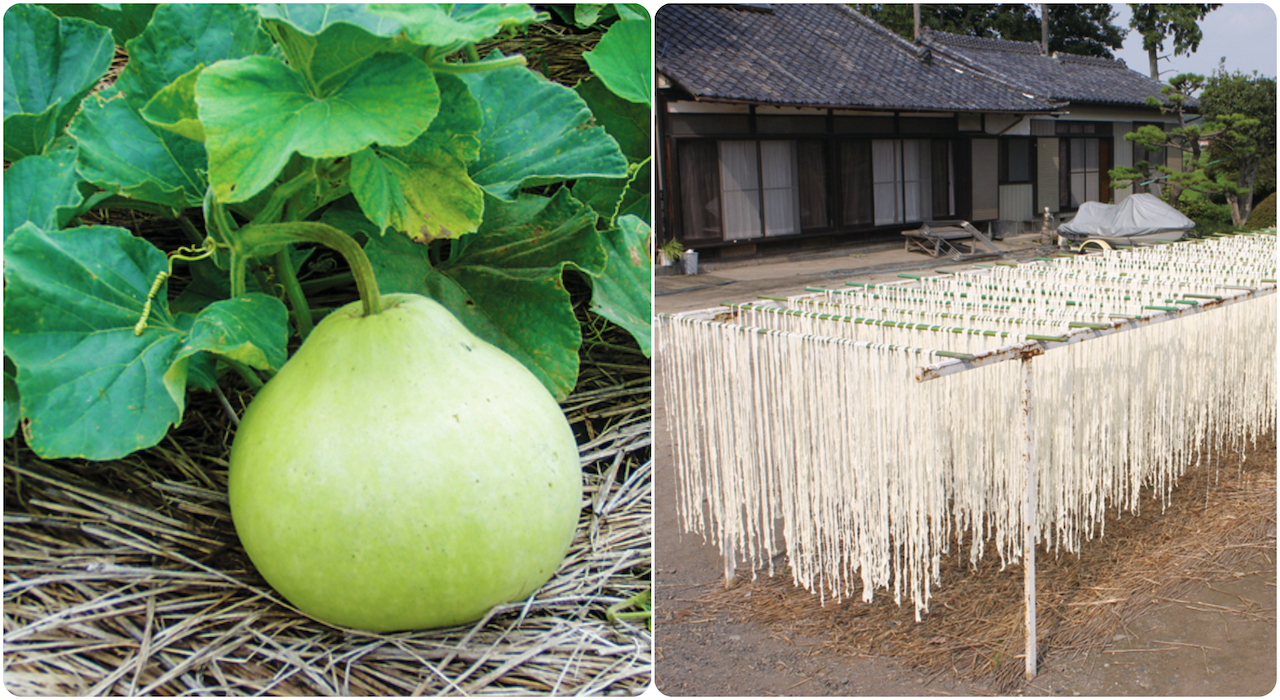
干瓢・かんぴょう・KAMPYŌ
This Kitchen PROJECT is about using KAMPYŌ, sun-dried fukubé gourd ribbons in YOUR kitchen. Be sure to source UNBLEACHED (無漂白 mu hyō haku) gourd ribbons so that you can use the softening liquid as a tasty stock.
Gourd ribbons are used to tie up any number of edible packages in the Japanese kitchen such as kombu maki (An American Taste of Japan page 116 Gift-Wrapped Kelp Rolls). When gourd ribbons are simmered in a sweet soy broth they become a filling in sushi rolls called nori maki.
When simmered in sweetened umezu the ribbons turn vividly pink and exude a lovely, plum-like aroma. They, too can be used in sushi rolls. See page 33 in Kansha (Festive Flower Sushi Rolls).
Gourd ribbons can also be deep-fried to make (addictatively delicious) crunchy gourd chips. See page 145 in Kansha.

Bulbous fukubé gourds are harvested in the summer; the gourd is set to spin against a sharp blade that shaves it into ribbons. The ribbons are then hung to dry in the sun (or well-ventilated shade). Tochigi Prefecture, north of Tokyo, has been the center of production of kampyō since the Edo Period (1603-1868). It continues to produce about 80% of all dried gourd ribbons sold in Japan.
Want to know more about kampyō? Look at the Kampyō Kitchen Culture post and my July 2022 newsletter.




